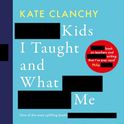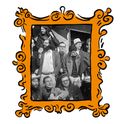Travel writing is one of the largest literary genres; it pre-dates every other save poetry and religious writing. The Exodus of Moses and Homer's Odyssey might count as the earliest specimens, but if the former is excluded on grounds of having too tenuous a link with fact, and the latter for having none, then with them would alas go-for the same respective reasons-the anonymous 14th century Voyage of Sir John Mandeville and Swift's Gulliver's Travels (1726). This would make Description of Greece (2nd century AD) by Pausanias the earliest extant genuine travel book: it includes topographical descriptions, city guides and accounts of customs and beliefs.
Mandeville might have been mythical, but Ibn Batuta was a real 14th century traveller who left his footprints all over the middle and far east, India and Russia. By royal command he left a detailed and perceptive account of the world of his time.
Travellers have written for many reasons. Most did so to inform and entertain. Richard Hakluyt's travel records, the Principal Navigations ... of the English Nation (1600) did both; in it merchants learned of harbours and markets, while browsers enjoyed eye-widening accounts of distant marvels. More recently, travel has become as much an opportunity for psychological as for geographical voyaging, and the meditative travelogue is well established. It has its precedents in Laurence Sterne's Sentimental Journey (1768) and the travelling sections of John Evelyn's Diary (1818). One of its contemporary exponents is Colin Thubron, whose perceptions of the people and places he visits come filtered through mental lenses of a particular prescription; as witness his account of China in Behind the Wall (1987).
China has always been well served in travel writing because its civilisation seemed so Other when travel first became global. In the world's largest archive of travel documents, the letters and reports of Jesuit missionaries, there is a rich Chinese section, of which a fine example is the reminiscences of Matteo Ricci in his Historia. Marco Polo claimed in the Travels to have visited China, but he offers nothing like the astuteness of observation, nor the charm and oddity, of that dauntless pair Huc and Gabet, who recorded their 19th century explorations in Travels in Tartary, Tibet and China 1844-46.
And China was not without travellers of its own. The most celebrated is the 7th century monk Xuan Zang, whose long and mighty trek across the barren roof of the world to India-he went to collect Buddhist scriptures-is recounted in the classic Journey to the West.
From the earliest Christian era, guides to the Holy Land-first for pilgrims who went to pray, and later for crusaders who went to prey-were numerous. A famous later example is Wynkyn de Worde's Informacion for Pylgrimes (1525). When travelling for one's spirit replaced travelling for one's soul, the grand tour became an institution; a typical bestseller was Thomas Nugent's The Grand Tour (1749), which, like later Baedeker and Murray guides, gives an incidental and often hilarious insight into what the well-heeled traveller once needed by way of portable comforts.
Scientific travels such as Darwin's account of his seasickness and discoveries aboard HMS Beagle will always stir some, and military and political wanderings, such as Xenophon's Anabasis in the first category, and William Cobbett's Rural Rides (1830) and George Orwell's Road to Wigan Pier (1937) in the second, will stir others. But specifically literary travel writing always invites attention. There are many examples: Madame de S?vign?'s Letters from Provence and Brittany (1726), Charles Dickens' American Notes (1842) and Pictures from Italy (1846), and Henry James' English Hours (1905) and Italian Hours (1910). Italy brings out the best and worst in authors, and therefore affords a good test: DH Lawrence is at his most characteristic in Twilight in Italy (1916).
Other parts of the world have been copiously served. The Amazon and the Hindu Kush have their poets by the dozen. Africa is more sparsely written; Evelyn Waugh produced a sprightly and intermittently spiteful A Tourist in Africa (1960) which, potboiler notwithstanding, is a minor gem. But Africa's most lyrical wanderer is Laurens van der Post, as his Venture into the Interior (1952) shows.
Classics of the genre barely need mention. Patrick Leigh Fermor's A Time of Gifts (1977) is one, but how many know that Thomas Coryat long ago also walked Europe and wrote about it in Crudities (1611)?
A list of favourites would have to include books that reveal cities. Angelo Ripellino's Magic Prague (1994) and Vincent Cronin's Paris (1994) are recent examples of guides not to the streets but to the mentalit? of places. A character in Proust wishes he had read about Paris before growing up there, so as to appreciate it more: Londoners can profit from Peter Vansittart's choice London: A Literary Companion (1992). Perhaps this gives the hint: to get under the layers of, say, New York or Dublin one should start respectively with Edith Wharton's The House of Mirth (1905) and James Joyce's Portrait of the Artist as a Young Man (1916)-and keep following that rule.












